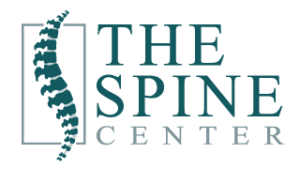Back pain now causes more disability worldwide than any other condition. In fact, about 25% of American adults report lower back pain in the past three months. If you’re struggling with back problems, don’t hesitate to visit a specialist.
Here are five different types of back pain you might encounter in time. If you delay seeking treatment, back pain could impact your mobility and quality of life.
Read on to learn more about the types of back pain that require care today.
Inflammatory Back Pain
Inflammatory back pain can occur if you’ve developed inflamed tissues in your spinal joint. This form of back pain is usually the result of medical conditions that cause the immune system to attack your spinal joints.
The most common condition that leads to inflammatory back pain is ankylosing spondylitis.
Let a chiropractor know if your back pain has persisted for over three months. Usually, the onset of pain begins in patients younger than 35 years old.
Sometimes, moderate exercise and physical activity can help ease your pain symptoms.
An experienced chiropractor can help you manage your pain symptoms. However, you’ll need to visit a physician to address your underlying medical condition.
Your chiropractor can help you keep your pain symptoms from flaring up. They can also recommend the best stretches for pain relief.
Thoracic Back Pain
Your thoracic spine consists of the 12 vertebrae where your ribs attach. This form of back pain usually occurs due to an underlying health condition.
You could experience nerve pain in the lower body or your legs. Tingling and numbness are common symptoms as well.
Other symptoms include severe back stiffness, weight loss, fevers, or chills.
Let your chiropractor know if you begin experiencing these symptoms. They can develop a customized treatment plan based on your needs.
Middle Back Pain
Middle back pain is sometimes synonymous with upper back pain. The pain usually occurs above the lower back but below the rib cage.
Smoking, obesity, weight gain, and a lack of physical activity can contribute to middle back pain. Women who are pregnant might experience this form of back pain as well.
Radicular Back Pain
This form of back pain affects the lower back due to degeneration of the disc or pinched nerve roots.
You might experience sharp shooting pains that begin in the lower back. The pain could travel into one or both legs as well. You could also notice numbness and tingling in your legs.
Extension-Dominant Back Pain
Extension-dominant back pain occurs in the joints at the back of the spine—your Zygopophyseal joints, or “Z-joints.”
In some cases, this type of back pain is difficult to identify. It usually follows an irregular pattern. However, some symptoms can include:
- Localized spinal pain
- Back stiffness
- Pain in the middle and lower back after prolonged standing
- Intense back pain after physical activity
- Temporary back pain relief when bending or sitting
Some patients also experience a mild tingling sensation in their legs or leg pain.
Target your flexors with exercises that stabilize your hip and abdominal mobility to treat this form of back pain. You can also use periodic flex postures to ease your pain symptoms. Acupuncture and manual therapy could help as well.
Avoid arching your back to alleviate the pain, though. Otherwise, you could develop posture problems.
If the pain doesn’t fade, talk to your chiropractor. They might also recommend a spinal adjustment, manual therapy, or acupuncture.
A back pain specialist can treat this form of back pain by reducing pressure on your spine, namely during extension. A chiropractor can help build your spinal and core strength to minimize future symptoms, too.
Flexion-Dominant Back Pain
You might have flexion-dominant back pain if you’ve recently injured a disc.
Symptoms can include:
- Lost range of motion
- Pain that gets worse when you sit, lift, or sleep
- Leg pain or weakness
- Tingling or numbness
- Spine pain
In mild cases, your symptoms might fade if you walk or stand up for a short period of time.
You can try using stretches that involve extending the lumbar spine to ease your flexion-dominant back pain. Regular directional exercises can alleviate the pain and improve your range of motion, too. Consistent stretches could help your back feel flexible while easing your pain symptoms.
Talk to a chiropractor to discuss the stretches that can help your back feel more flexible. They can recommend exercises based on your unique situations. Try performing these exercises at intervals throughout your day.
At our clinic, we use the ProAdjuster 360, the latest in computerized treatment technology. The ProAdjuster 360 can deliver comfortable, precision adjustments by analyzing and interpreting joint motion. You should notice improved joint motion following treatment.
Neurogenic Claudication
Neurogenic claudication is a form of extension-dominant back pain that usually affects the elderly. It can occur due to the compression of nerves when a person runs, walks, or stands. This form of back pain usually has a significant effect on mobility.
Symptoms can include pain, weakness, or numbness in the legs after walking. Though you might not experience localized back pain, you could notice your symptoms fade when you sit.
You might have to take frequent breaks from your day to walk when your pain flares up as a result.
Over 35 million Americans visit a chiropractor each year. Nearly 80% say chiropractic care is “very effective” for treating back pain. If you’re interested in getting rid of back pain, don’t hesitate to visit your chiropractor.
They could recommend flexion-based stretches throughout the day as part of your back pain treatment. Improving your abdominal strength and increasing your hip mobility could ease your symptoms as well.
Talk to a Chiropractor About Your Different Types of Back Pain
Don’t hesitate to visit a specialist if you begin experiencing these different types of back pain. An experienced chiropractor will ensure your musculoskeletal system is in proper alignment. With their help, you can ease your symptoms before they cause complications.
Want to talk to a spine specialist about developing a back pain treatment plan based on your needs? We’re here to help.
Contact us today to get started.


